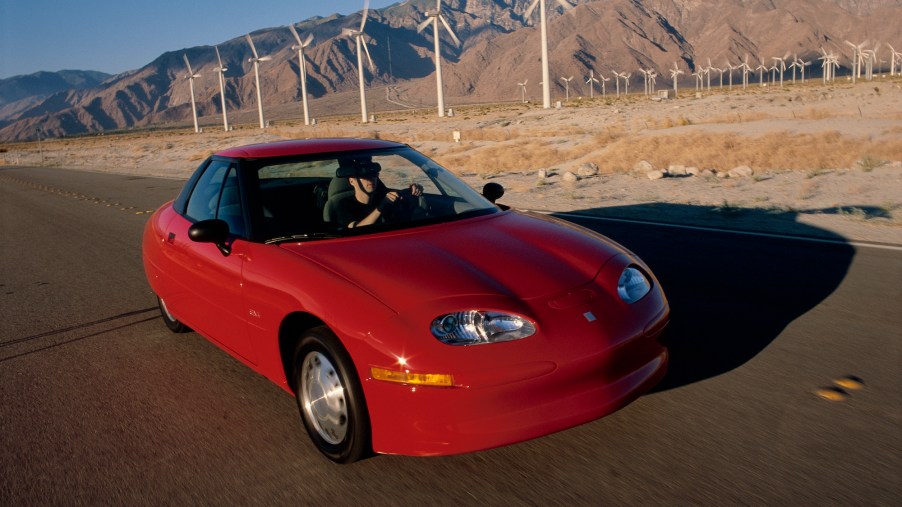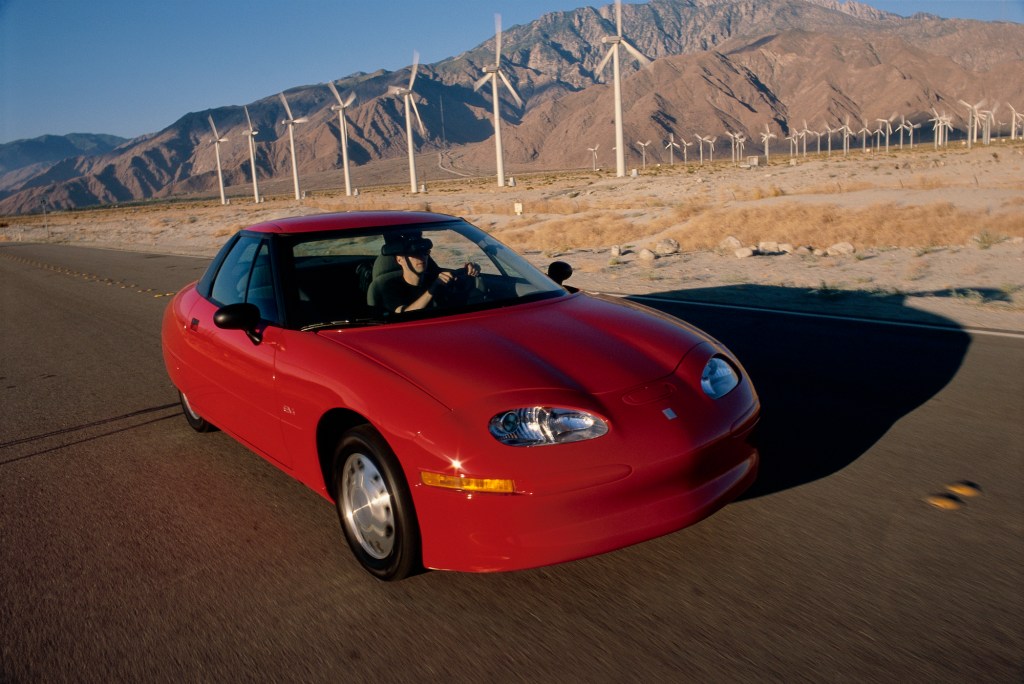
The Failed GM EV1 Electric Car Was Ahead of Its Time
Tesla is arguably the best-known EV maker, but it didn’t produce the first widely produced electric car. That accolade goes to General Motors. It produced the EV1 in the late ’90s. And although the GM EV1 wasn’t successful, it was still ahead of its time, and other automakers learned from its failure.
The life and death of the GM EV1

The idea of an EV isn’t new, as electricity has been used to power things for a long time. For example, in the ’60s, GM experimented with converting a Corvette into an EV. But like many things in that decade, EV tech was in its infancy, and those experiments never led to any production models of an EV.
That was the case until the ’90s when GM was in the middle of designing and producing the EV1, the world’s first mass-produced EV. It wasn’t actually called the EV1 at the time, but rather the Impact. It was a concept car, and like many concept cars, it was impressive in its numbers. In fact, the Impact set a speed record for EVs, and that earned it plenty of positive press, Car and Driver reported.
But like many cars that go from concept to production, the Impact’s transition into the EV1 didn’t go so well. It looked futuristic for the time, but its numbers ultimately doomed it. In short, the EV1 cost a lot, and GM thought the segment would be unprofitable. So after producing about a thousand EV1 vehicles, General Motors canceled the project.
A failed car, but many lessons learned
Though the EV1 failed, the journey ultimately was more worthwhile than the destination. According to Car and Driver said, GM’s engineers had a tough task ahead of them because they needed to pioneer new technologies to get the EV1 ready for the road.
The development of the EV1 also led to GM claiming a lot of “industry firsts,” C/D reported. Some of them include inductive charging, the tech that allows wireless charging to happen, and keyless ignition because the EV1 had a keypad. One of the more eco-friendly firsts was regenerative braking, which can help save fuel.
Many of the things the EV1 engineers pioneered are now so common that they’re practically everywhere. For example, the EV1 had “the grandfather” of today’s HVAC systems, and it also had the predecessor to power steering, Car and Driver reported. The list of the EV1’s innovations goes on and on, and the car was “a true technological triumph,” C/D said.
The GM EV1’s developmental process
Unfortunately, though, the EV1’s doomed fate was almost inevitable. After all, the main reason why the EV1 ever got mass-produced was that GM liked that the Impact was getting good reviews, Car and Driver reported. In 1993, GM put the program on hold due to the company’s financial issues. But when some car reviewers got their hands on the Impact, their rave reviews persuaded GM to keep the EV1 going.
Eventually, General Motors produced the EV1, but it was available only for lease. That GM never sold the EV1 irked TV celebrity and car enthusiast Jay Leno, who wanted to buy the car, C/D reported. In any case, the fact that GM was ready to pull the plug on the EV1 before it was mass-produced was a sign of the things to come. But fortunately, General Motors has changed its tune about EVs.



